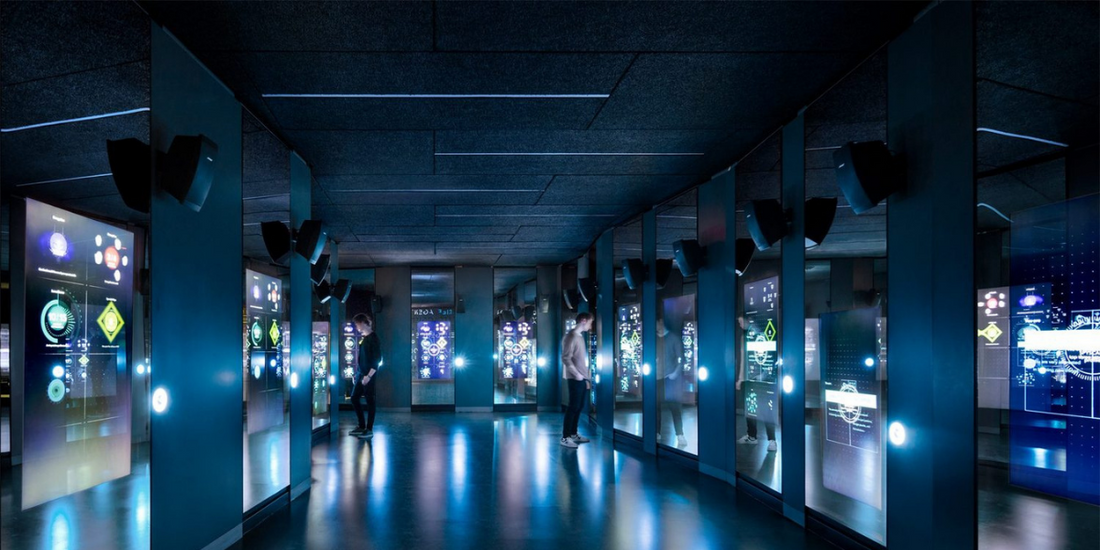
Why Are Museum Interactive Displays Gradually Emerging?
The increase of interactive exhibits at museums appears unabated, but why are museum interactive displays gradually emerging?
Visits to museums are an engaging way to learn new things. It presents world-changing historical, scientific, artistic, and cultural treasures. It helps us to comprehend and value history, and to be proud of the accomplishments of those who came before us.
Museum directors and designers are doing their best to adapt to changes. This is to continue nurturing knowledge and enhancing visitor experiences. They are looking for novel approaches to increase the attractiveness and enjoyment of museum visits for a wider audience. Installing museum interactive displays, in their opinion, is one approach to pique visitors' interest.
Examples of museum interactive displays
Interactive museum maps
Visitors can be engaged with interactive museum maps in a way that is not possible with regular paper maps.
Visitors can plan their visit to the museum. They can discover more about the museum's exhibits. Interactive maps or navigation can provide directions throughout the galleries. Moreover, interactive kiosks might offer more details about the displays and collections.
Miniature museums
Unfortunately, not all museums, especially smaller ones, have museum interactive displays.
Several small museums face difficulty in obtaining money and attention. However, they are not discouraged. They are beginning to understand the advantages of adding touchscreen devices to their exhibitions.
For instance, Scotland's national poet Robert Burns' museum is housed in the humble home where he was raised in 1759. The museum has limited resources and space. Therefore, it uses technology to enable visitors to explore the cottage and other elements of Burns' life and work.
Together with visual and audio elements that emphasize his poems and songs, they have also merge amusing interactive quizzes. Museums can broaden their exhibits without spending money on additional guidebooks by using features such as QR codes and downloadable applications. Visitors can then access extra information.
Museum interactive displays with a learning function
Museum interactive displays allow museums to give visitors more immersive and interesting learning experiences.
Capacitive touch screens and active kiosks offer visitors a unique opportunity. They can gain in-depth information about the artwork or artifacts on display. This is different from simply appreciating them from a distance.
Museum interactive displays can include videos, 3D graphics, audio files, and games. This makes it easier for visitors to explore the exhibit and understand its value. They can do this by participating more. This stimulates emotional engagement with the artwork and artifacts, making for an memorable experience that visitors won't soon forget.
Playable on touchscreen devices
Museums can use games to provide engaging experiences. This helps visitors gain a better understanding of the artwork or historic relics on display.
Visitors can have fun at the museum. They can participate in quizzes, complete puzzles that look like famous artworks, or take virtual tours of the exhibitions.
Kiosks for visitor check-in and registration
Interactive kiosks are used in museums.
They provide visitors with a simple way to sign up or check in for activities and events. These interactive kiosks give visitors a self-service way to look up options and quickly book their tickets.
Family amusement
Pontefract Museum in North Wales is another small museum where visitors can learn about the benefits of interactive exhibits. The museum recently made investments in the display halls and the structure, which was constructed in 1904.
The first voting box ever used is on display.
It is accompanied by the Ackworth Treasure of gold coins.
These coins date back to the English Civil War in the seventeenth century.
The museum has taken steps to ensure a great experience for visitors. They have merge innovative technology and created interactive exhibits tailored for families.
Benefits of museum interactive displays
Customisation
Employing museum interactive displays offers a great benefit. They can be customized to meet the specific needs of each museum. Custom operating features can be installed to present information to visitors in a straightforward, user-friendly manner.
Information updating is fast and straightforward with Mobile Device Administration (MDM) technology.
This adds an exciting new element to exhibitions, even on a daily basis. Physical kiosks or touchscreen displays are attractive and durable.
They can withstand regular use. The software will have a lockdown option to prevent visitors from accessing data. To aid in the planning of upcoming exhibitions, a number of features, including ticketing and market research services, can be added.
Interactive exhibits that are affordable for museums
Interactive museum exhibits are utilizing tv screens, touch screen kiosks, and virtual reality technology. This technology brings history to life and makes it seem more vibrant and real.
Museums of all sizes and resources are realizing the advantages of buying museum interactive displays. These displays add excitement and enjoyment, especially for younger people. The installation of high-quality interactive display devices is a very practical and affordable solution to boost visitor rates.
Aids in information retention
It is thought that museum interactive displays might aid in information retention. People can process and recall information when it is integrated into engaging activities. This is advantageous, especially for kids who want to sharpen their learning skills.
Immersing visitors in the displays encourages participation and education.
It is an effective way to communicate a narrative or idea.
Museum interactive displays give visitors the opportunity to explore artifacts with all their senses. This is possible thanks to cutting-edge technology.
Encourages imagination
Another benefit of museum interactive displays is that they encourage creativity, particularly in young people. Visitors can check and play with the museum interactive displays themselves. Most of the items are made with durable materials. This ensures they can withstand regular use.
Given that they are permitted to explore with the exhibits all alone, children won't have any trouble adhering to tight instructions. More creativity can be sparked by visiting an interactive museum than by doing most other things.

Conclusion
Attendance at museums has decreased significantly in recent years due to people struggling to make sense of materials available online.
However, modern museums have found the best way to attract more visitors is to provide interactive exhibits.
Museums are becoming increasingly popular, particularly among younger audiences. To give visitors an immersive experience, administrators and curators are introducing touch screens, iPads, and virtual reality technologies into their museum interactive displays.








